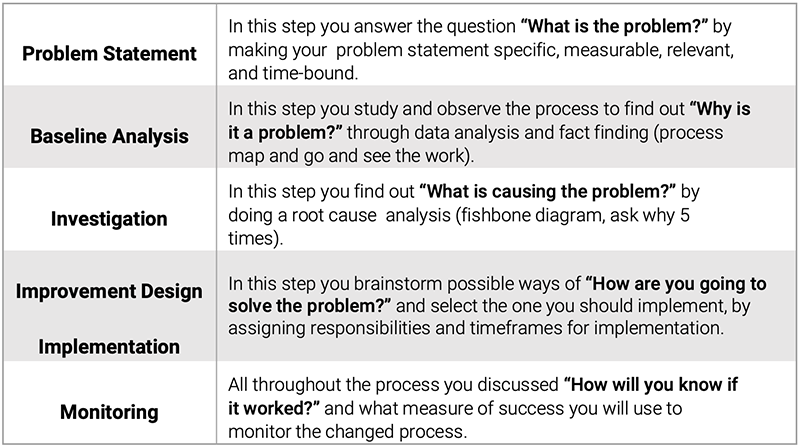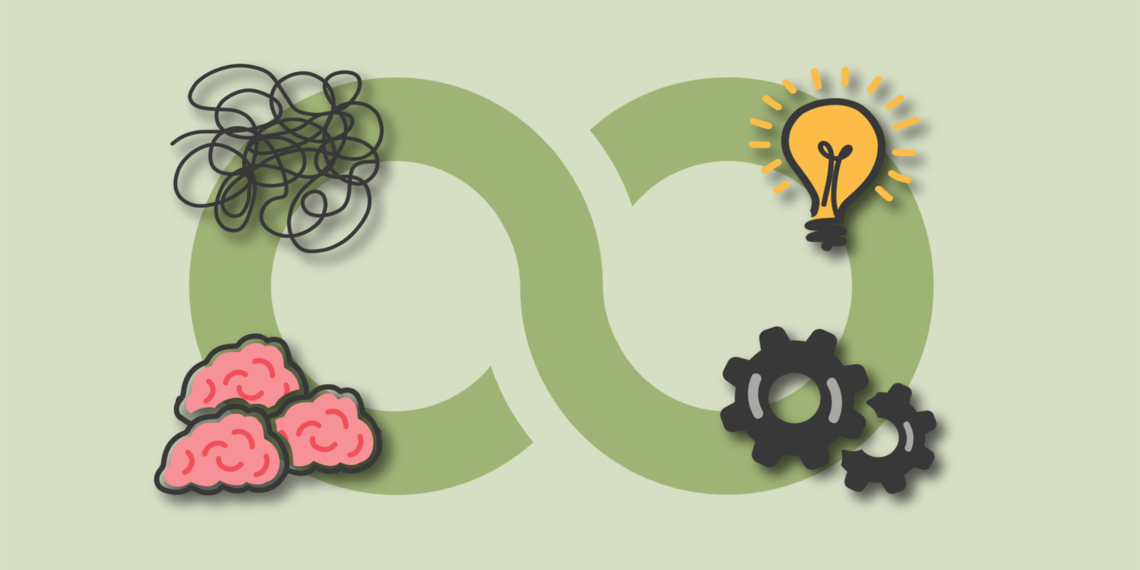About this content
A problem can be defined as a gap in performance (actual vs. expected). Problem solving is therefore the act of identifying the possible causes of that “gap” and implementing countermeasures that aim at mitigating or eliminating them, so that the performance can meet expectations.
In life as well as in the work we do, we are frequently faced with problems, sometimes daily. Not all problems are equal and not all of them can benefit from the same approach to problem solving. This is why it’s helpful identify early on what approach to problem solving would be best fit for the problem at hand:
- Just do it
- Plan-Do-Study-Act (PDSA)
- Complex Problem Solving
- Innovation (or research)
How it works
When faced with a problem, ask the following questions to identify what approach is best suited for the type of problem you are addressing:
- Are you addressing a self-evident process with a simple solution?
- Are you making a change and want to track the before/after improvement results?
- Are you solving a problem that appears to have multiple causes?
- Are you implementing a new process or service?
Follow the respective clue to learn more about the best approach for each type of questions problem resolution.
What approach should I use?
When to use it
- Quick action is preferred or necessary
- The cause of the problem is self-evident
- Proposed solution is small, easily testable, and not risky
- The change is easily reversible
How to use it
- Ask: how can I improve the process? How can I make the process better, faster, cheaper?
- Use visual management to make a process clearer
- Simplify a process to make it more efficient
- Use less costly supplies or methods to save costs
Examples of when to use Just do it
- Implementing a policy or revising an outdated policy
- Switching to a vastly cheaper and better technology or supply
- Implementing a previously non-existent checklist
- Eliminating a redundant or non-value added step
Just Do It worksheet: Click here to download
When to use it
- Application of the scientific method in testing a change
- Use of pre and post change to measure success of intervention
- Focus on continuous improvement in the process
How to use it
Plan: What change are you going to make?
- Who is going to do what and by when?
- Have a clear objective, a goal (often called AIM statement)
Do: How are you going to make it?
- What resources will you need?
- What method of improvement will you use?
Study: Did you see an improvement?
- How long will you observe the change?
- Did you achieve the set objectives?
Act: Adopt the change, revise the plan, discard
Examples of when to use PDSA
- Testing the cost effectiveness and impact on quality of a new surgical implant compared to the currently used one
- Confirming the before and after financial impact of adding one more service line
PDSA worksheet: Click here to download
When to use it
- The cause of the problem is unknown
- The countermeasures are difficult to adopt
- Disciplined approach to problem solving is preferred
- Multiple stakeholders or departments needs to be involved
How to use it
- Use a structured approach to problem solving such as A3, DMAIC, 8D, etc.
- Usually they follow similar steps identified below:

Examples of when to use complex problem solving
- Length of stay in a unit is higher than national average
- Staff reports feeling of burnout and lack engagement that results in high turnover
A3 Problem Solving worksheet: Click here to download
When to use it
- A new way to deliver a product or service or a new product or service to address a need
- New knowledge on how to treat disease or improve patient care that requires IRB approval
- Data and statistical analysis are necessary
- Funded by internal or external research grants
How to use it
- Innovate with the intended customer in mind
- Think in terms of minimum viable product (MVP)
- Leverage Agile development principles
Examples of when to innovate
- Implementing Covid-19 testing sites in the community
- Transition employees from on site working to work from home, with minimal disruption
Luca Boi
Carolyn Brayko
Magnet Program Director Mary-Jean (Gigi) Austria explains how Nursing Shared Governance provides support for knowledge sharing, clinical skill building, and collaborative decision-making closest to the point of care.
Access to medical care isn't a given. Medical students from the Tribal, Rural, and Underserved Medical Education (TRUE) Graduate Certificate program tell us first-hand experiences that helped them build a passion for complex problem solving by experiencing big, systemic challenges up close.
What is “Value Management” and why should you care? It's how University of Utah Health systematically improves the quality of care delivered to patients—and its never been more important as we redesign care during a pandemic. Chief Quality Officer Sandi Gulbransen shares the seven tenets of Value Management that guide our work.
